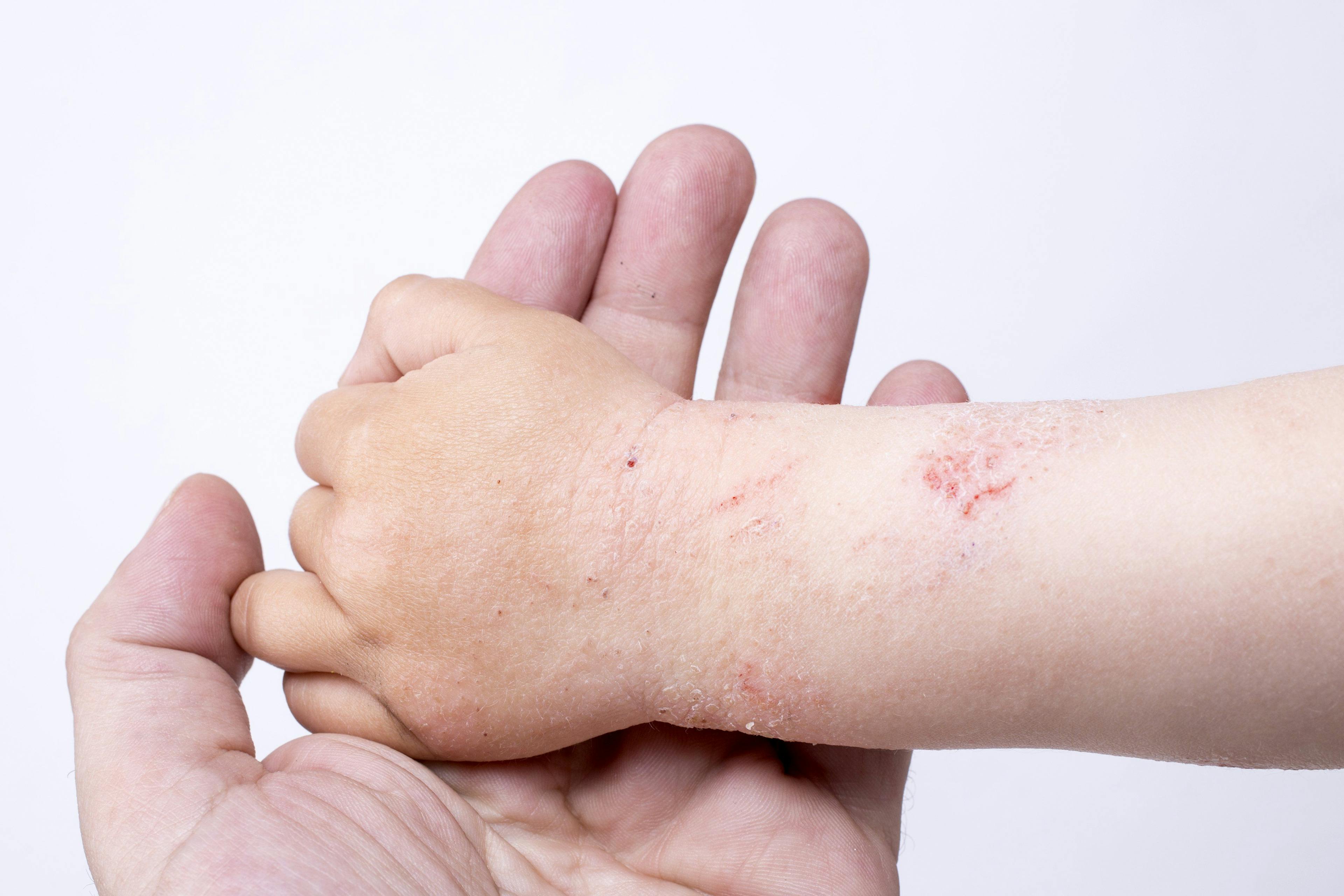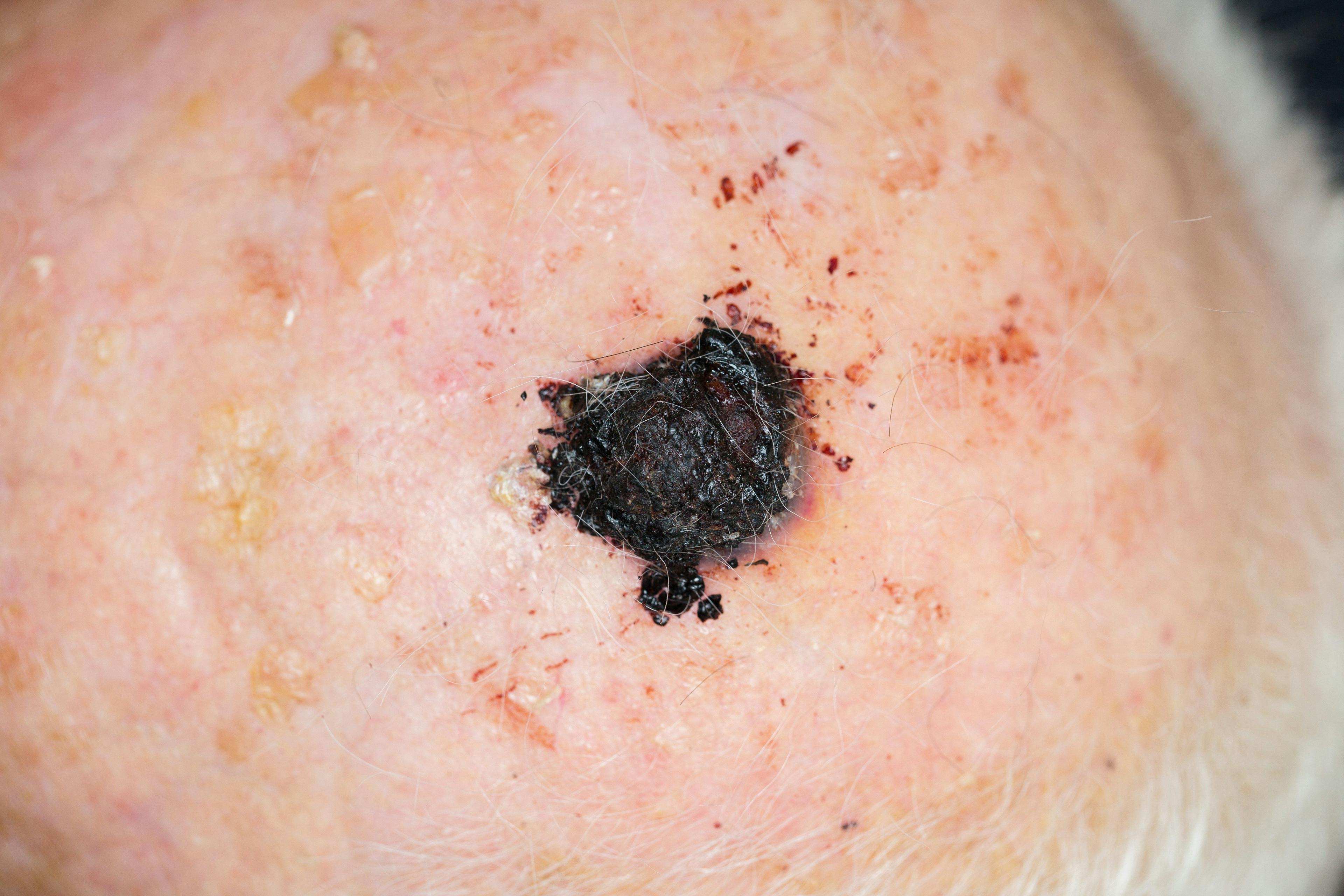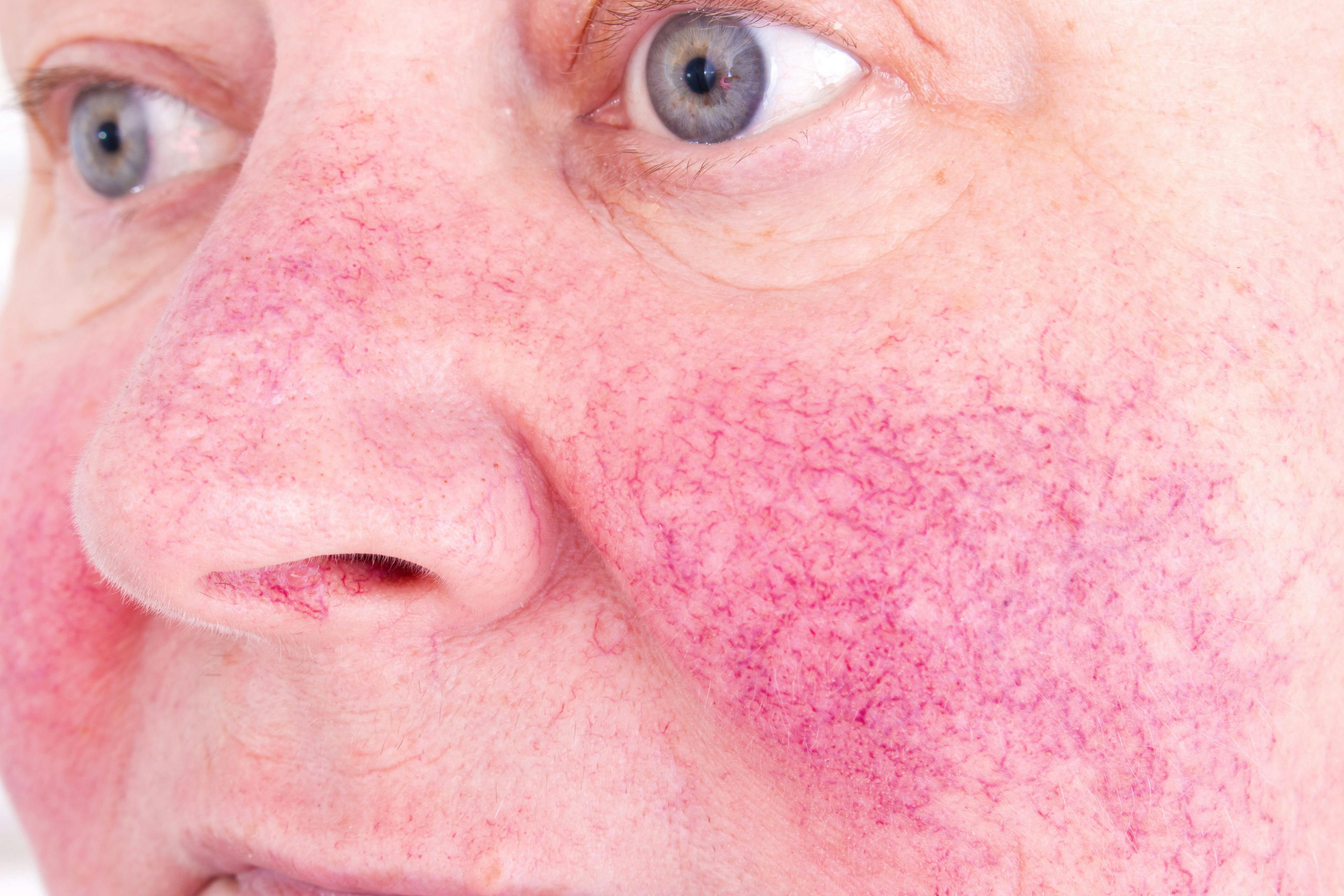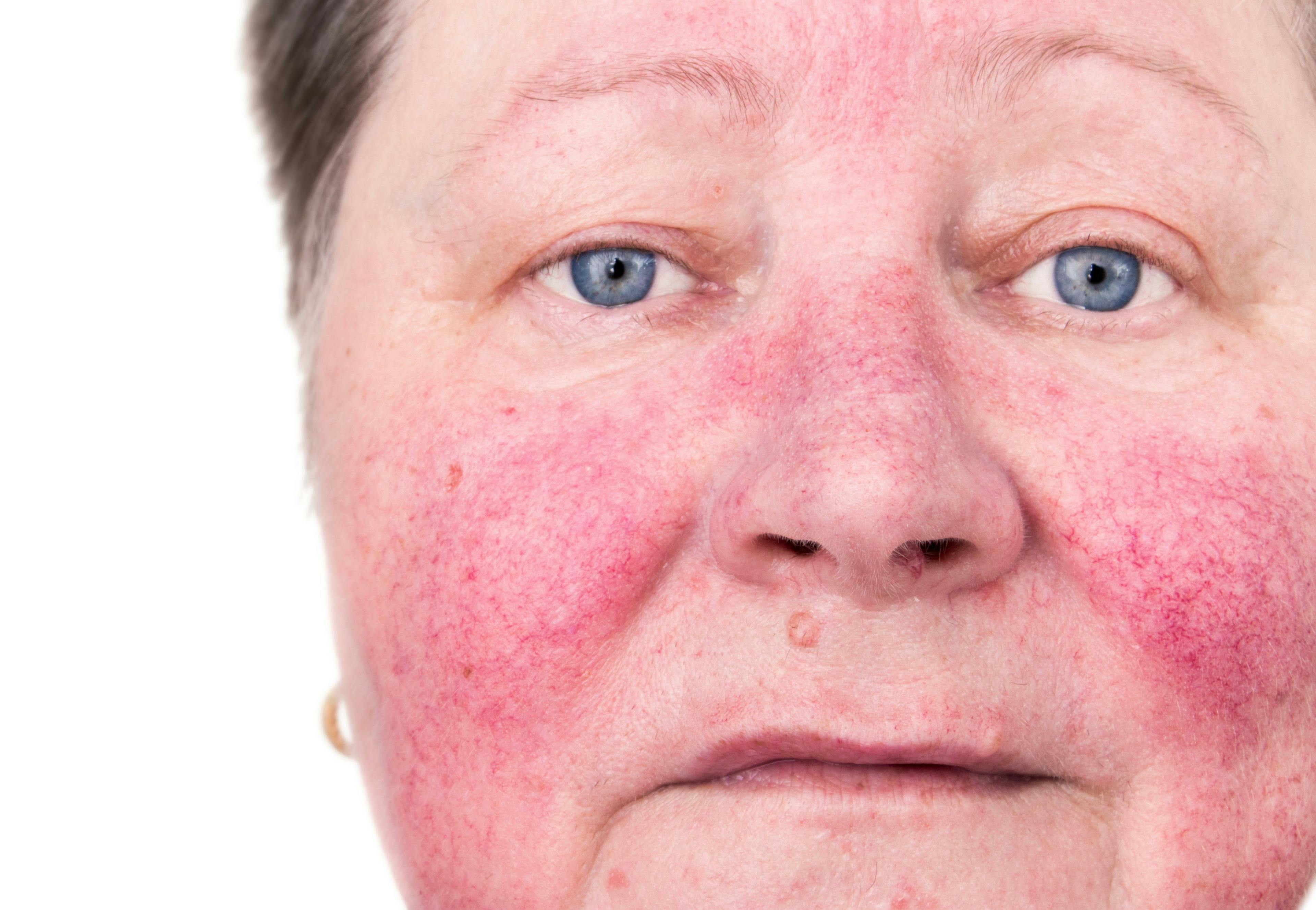- Acne
- Actinic Keratosis
- Aesthetics
- Alopecia
- Atopic Dermatitis
- Buy-and-Bill
- COVID-19
- Case-Based Roundtable
- Chronic Hand Eczema
- Chronic Spontaneous Urticaria
- Drug Watch
- Eczema
- General Dermatology
- Hidradenitis Suppurativa
- Melasma
- NP and PA
- Pediatric Dermatology
- Pigmentary Disorders
- Practice Management
- Precision Medicine and Biologics
- Prurigo Nodularis
- Psoriasis
- Psoriatic Arthritis
- Rare Disease
- Rosacea
- Skin Cancer
- Vitiligo
- Wound Care
Publication
Article
Dermatology Times
The changing landscape of acne therapeutics
Author(s):
Drug development in acne is currently focused on targeting inflammation and reworking the vehicles of existing active drugs to increase their efficacy and tolerability, according to this expert.
“A better understanding of acne pathophysiology and the role of inflammation has … yielded a better understanding of how existing therapies treat the disease and have led to more comprehensive treatment strategies that are multitargeted," says Leon Kircik, M.D., Icahn School of Medicine at Mount Sinai, New York.
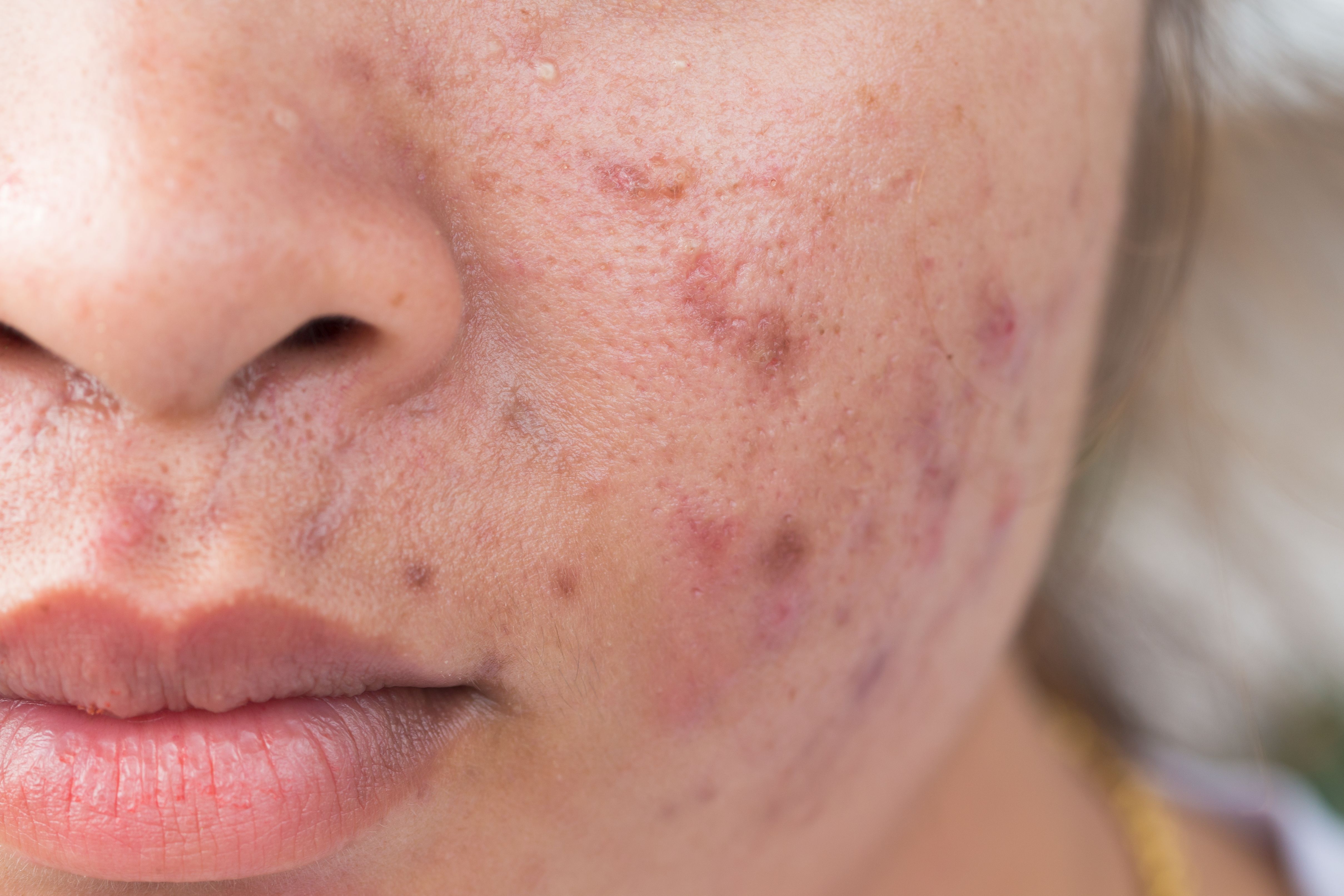
Dr. Kircik
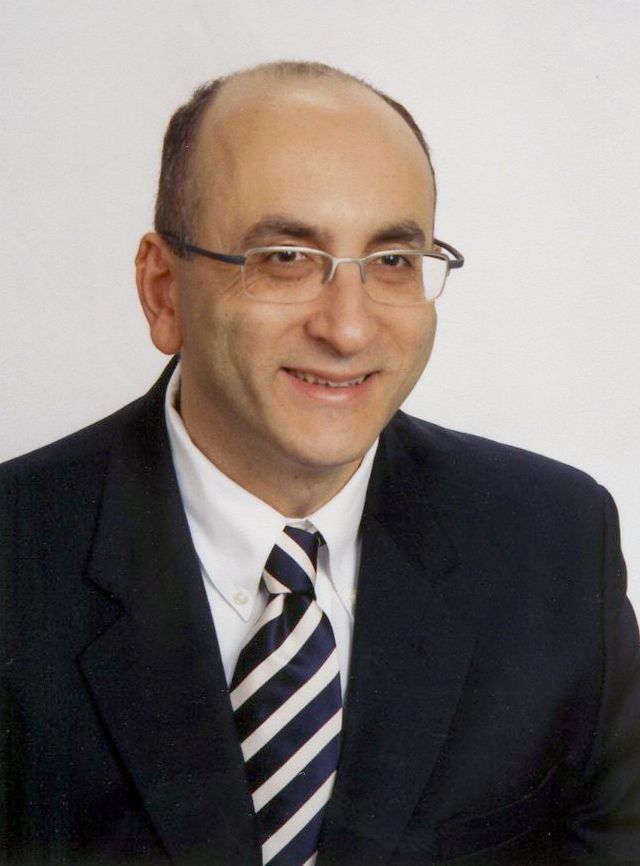
Sarecycline is the first new chemical entity approved for treating acne in years and the first antibiotic in four decades. It is likely to be followed by other new drugs, including clascoterone and cannabidiol (CBD) in the coming years, predicts Leon Kircik, M.D., of the Icahn School of Medicine at Mount Sinai, New York in a review of latest developments in the management of acne.1
Drug development in acne is currently focused on targeting inflammation and reworking the vehicles of existing active drugs to increase their efficacy and tolerability, he adds in a review of acne treatments published in Cutis.
NEW: Nigella seeds show promise for acne
Inflammation underlies the pathophysiological characteristics of acne: the proliferation of Cutibacterium acnes (formerly Propionibacterium acnes), increased sebum production with an increase in circulating androgens and faulty keratinization. Research has even indicated that the microcomedone – the first stage of an acne lesion – is essentially an inflammatory lesion, the review notes.2
“This realization has clearly influenced the approach to acne treatment but has not yielded a bevy of new treatments,” says Dr Kircik who is also affiliated with Indiana University Medical Center in Indianapolis, Physicians Skin Care in Louisville, Ky., and DermResearch and Skin Sciences, PLLC, Louisville; and Skin Sciences, PLLC, Louisville.
RELATED: Acne patients open to antibiotic-free treatment
Topical and oral antibiotics are still primarily used to treat acne, along with topical retinoids and benzoyl peroxide, but he adds, “A better understanding of acne pathophysiology and the role of inflammation has, however, yielded a better understanding of how existing therapies treat the disease and have led to more comprehensive treatment strategies that are multitargeted.”
Below are key takeaways from the review regarding current and future therapies for the management of acne vulgaris:
SARECYCLINE
Sarecycline is the first new oral antibiotic approved by the U.S. Food and Drug Administration (FDA) in 40 years. The once-daily formulation is designed to treat inflammatory lesions of nonnodular moderate-to-severe acne vulgaris in patients 9 years and older.
RELATED: Narrow spectrum tetracycline for moderate-to-severe acne
Broad spectrum tetracycline antibiotics have been used to manage acne for several decades but have been associated with an increased risk of antibiotic resistance and gastrointestinal problems, says the review. Sarecycline is a tetracycline, but is considered narrow spectrum, meaning it does not act as strongly against enteric gram-negative bacteria.3
TOPICAL MINOCYCLINE
Systemic minocycline is often prescribed for acne management,4 but the oral antibiotic comes with potential safety concerns. These concerns include a risk for systemic lupus erythematosus and autoimmune treatment emergent adverse effects, along with gastrointestinal side effects and bluish discoloration, says the review.5
RELATED: Minocycline topical foam 4% approved by FDA for acne vulgaris
“Topical application of minocycline for acne would optimize the therapeutic effect while reducing systemic effects,” says Dr. Kircik. An investigational minocycline foam (FMX101 4%) is being tested and pharmacokinetic studies showed no evidence of minocycline accumulation over the 21 days of application,6 and the foam appeared to be safe and well tolerated in phase 3 trials.7 A similar foam formulation of minocycline (1.5% concentration) has shown benefit for rosacea in phase 3 studies.8
TAZAROTENE
Approved in 2012 for patients 12 years and older for the treatment of acne vulgaris, the topical retinol tazarotene was recently relaunched in an aqueous foam formulation to mitigate the potential for skin irritation. The improved tolerability of the foam vehicle is meant to encourage patient compliance and increase satisfaction, according to the review.9
RELATED: How to treat adult female acne
IN THE PIPELINE
And two topicals - an antiandrogen therapy and a cannabidiol formulation – are in the pipeline.
According to the review, researchers are exploring the use of clascoterone cream 1% for the treatment of moderate-to-severe acne in patients 9 years and older. The topical acts locally on androgen receptors in the skin to block the effects of circulating endogenous androgens.
RELATED: Novel acne cream seeks FDA approval
“Chemically, it shares a 4-ring backbone identical to dihydrotestosterone and spironolactone,” says Dr. Kircik.
It’s well known that androgens influence both sebum production and inflammatory responses within the follicle, which contributes to the development of acne.10
“Antiandrogen therapy would, therefore, inhibit excess sebum production and directly reduce the presence of certain inflammatory mediators in skin. This effect is expected to lead to reduced follicular plugging and a reduction in growth of C. acnes and its inflammatory by-products,” says Dr Kircik.
Systemic antiandrogens and hormonal modulation are already used to treat acne successful in some women, but there are concerns about systemic exposure.11 As clascoterone is applied topically and acts locally on androgen receptors in the skin, no systemic exposure has been seen and preliminary data from phase 2 trials suggest it has the potential to be an effective and a well-tolerated treatment.12
Researchers have found that cannabidiol (CBD), one of the 113 cannabinoids identified from Cannabis sativa, has anti-inflammatory properties which can prevent the proliferation of sebocytes,13 inhibit human keratinocyte proliferation14 and to possess potent antimicrobial activity against Gram-positive bacteria such as C. acnes.15
MORE ON ACNE: Read more stories here.
A synthetic cannabidiol topical formulation, BTX 1503, is being tested in acne, Dr Kircik says.
“Early clinical data confirm both the anti-inflammatory effects of topical BTX 1503 as well as its effects on noninflammatory lesions, with 4-week reductions in inflammatory lesion counts similar to what are reported in clinical trials for leading FDA-approved topical therapies in the same time frame,” he says.
References:
1. Kircik LH. What's new in the management of acne vulgaris. Cutis. 2019;104(1):48-52.
2. Kang S, Cho S, Chung JH, Hammerberg C, Fisher GJ, Voorhees JJ. Inflammation and extracellular matrix degradation mediated by activated transcription factors nuclear factor-kappaB and activator protein-1 in inflammatory acne lesions in vivo. Am J Pathol. 2005;166(6):1691-9.
3. Leyden JJ, Sniukiene V, Berk DR, Kaoukhov A. Efficacy and Safety of Sarecycline, a Novel, Once-Daily, Narrow Spectrum Antibiotic for the Treatment of Moderate to Severe Facial Acne Vulgaris: Results of a Phase 2, Dose-Ranging Study. JDrugs Dermatol. 2018;17(3):333-338.
4. Lee YH, Liu G, Thiboutot DM, Leslie DL, Kirby JS. A retrospective analysis of the duration of oral antibiotic therapy for the treatment of acne among adolescents: investigating practice gaps and potential cost-savings. J Am Acad Dermatol. 2014;71(1):70-6.
5. Garner SE, Eady EA, Popescu C, Newton J, Li WA. Minocycline for acne vulgaris: efficacy and safety. Cochrane DatabaseSyst Rev. 2003;(1):CD002086.
6. Jones TM, Ellman H, Devries T. Pharmacokinetic Comparison of Once-Daily Topical Minocycline Foam 4% vs Oral Minocycline for Moderate-to-Severe Acne. J Drugs Dermatol. 2017;16(10):1022-1028.
7. Raoof J, Hooper D, Moore A, et al. FMX101 4% topical minocycline foam for the treatment of moderate to severe acne vulgaris: efficacy and safety from a phase 3 randomized, double-blind, vehicle-controlled study. Poster presented at: 2018 Fall Clinical Dermatology Conference; October 18-21, 2018; Las Vegas, NV.
8. Gold LS, Del Rosso JQ, Bhatia ND, et al. Efficacy and safety of FMX103 (1.5% minocycline foam) in the treatment of moderate-to-severe papulopustular rosacea: results from two phase 3 randomized, multicenter,
double-blind, vehicle-controlled studies. Poster presented at: 2019 Winter Clinical Dermatology Conference; January 18-23; 2019; Koloa, HI.
9. Smith JA, Narahari S, Hill D, Feldman SR. Tazarotene foam, 0.1%, for the treatment of acne. Expert Opin Drug Saf. 2016;15(1):99-103.
10. Ju Q, Tao T, Hu T, KaradaÄ AS, Al-khuzaei S, Chen W. Sex hormones and acne. Clin Dermatol. 2017;35(2):130-137.
11. Barros B, Thiboutot D. Hormonal therapies for acne. Clin Dermatol. 2017;35(2):168-172.
12. Hebert A. Clascoterone topical cream, 1%: a novel, topical, local, selective androgen receptor antagonist: results from two phase 3 studies treating children and adult patients with facial acne vulgaris. Presented at: 2019 American Academy of Dermatology Annual Meeting; March 2, 2019; Washington, DC.
13. Oláh A, Tóth BI, BorbÃró I, et al. Cannabidiol exerts sebostatic and antiinflammatory effects on human sebocytes. J Clin Invest. 2014;124(9):3713-24.
14. Wilkinson JD, Williamson EM. Cannabinoids inhibit human keratinocyte proliferation through a non-CB1/CB2 mechanism and have a potential therapeutic value in the treatment of psoriasis. J Dermatol Sci. 2007;45(2):87-92.
15. Appendino G, Gibbons S, Giana A, et al. Antibacterial cannabinoids from Cannabis sativa: a structure-activity study. J Nat Prod. 2008;71(8):1427-30.
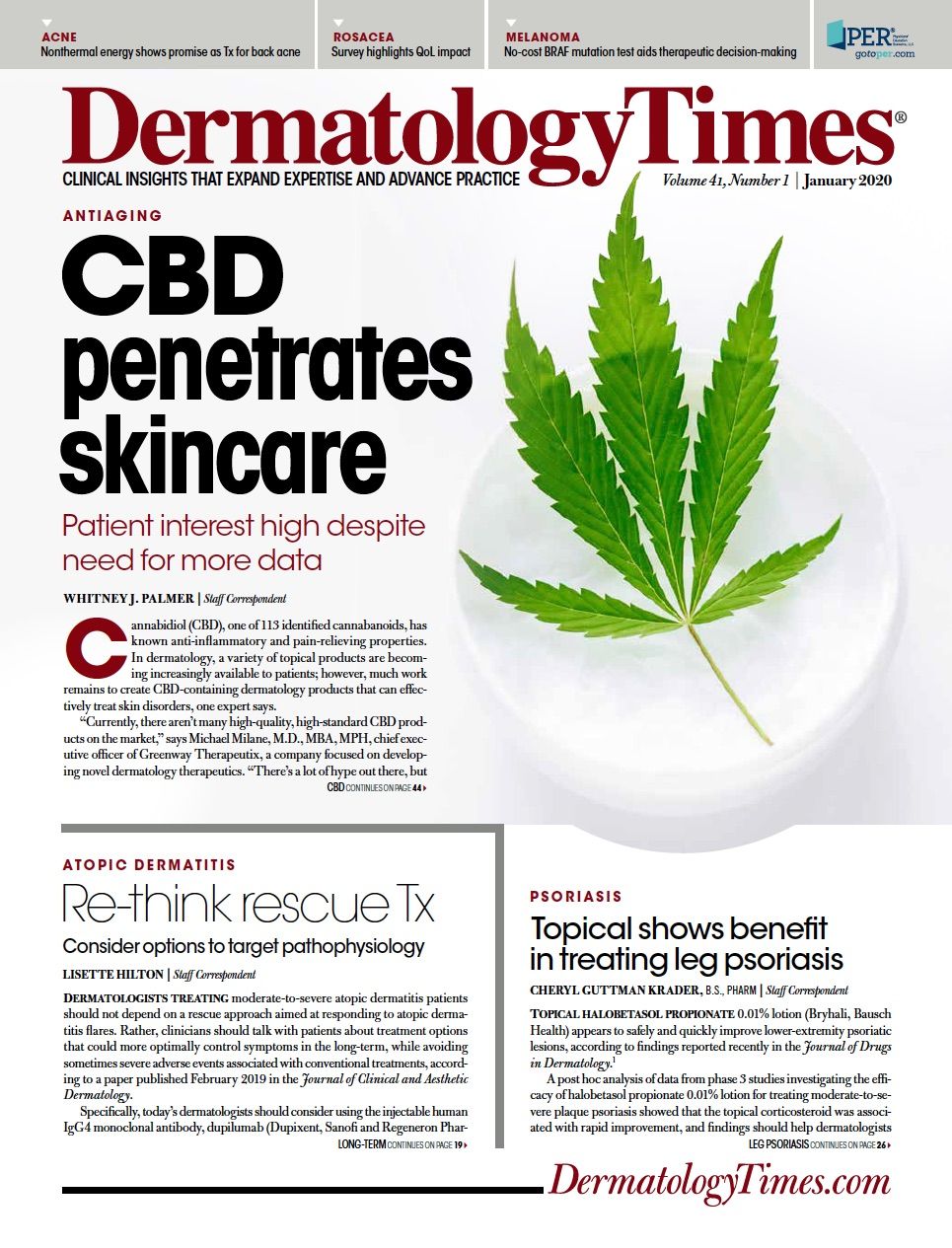
Newsletter
Like what you’re reading? Subscribe to Dermatology Times for weekly updates on therapies, innovations, and real-world practice tips.

